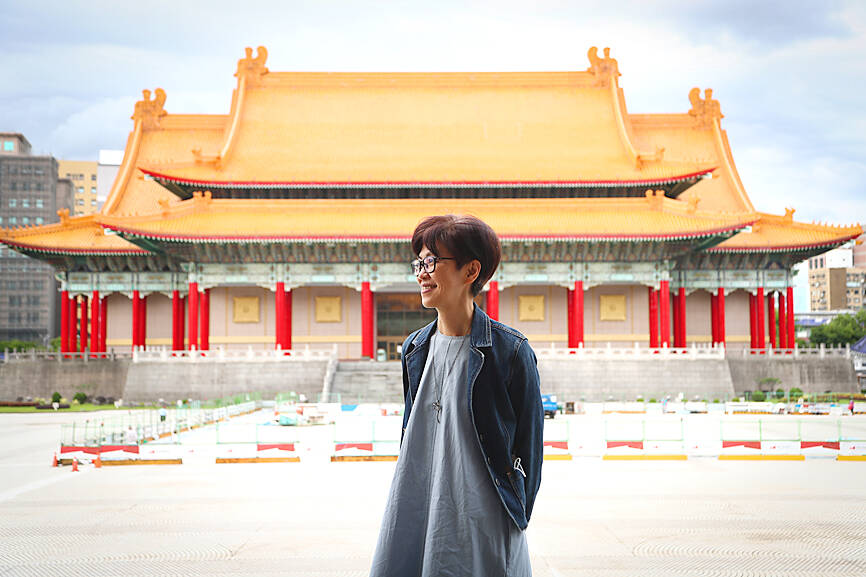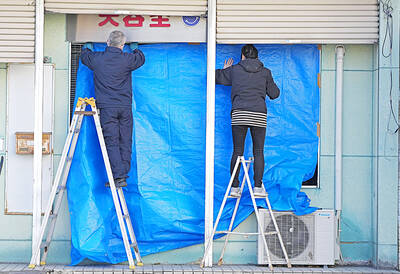The National Theater and Concert Hall (NTCH) has created tactile 3D models of its pipe organ for the visually impaired to experience one of the hall’s defining features.
A set of three models of the famous pipe organ at the National Concert Hall in Taipei were made at 1:30 scale, with some parts hand-carved and others made with 3D laser engraving technology, enabling the visually impaired to learn about the instrument through touch and sound.
The models seek to accurately represent the instrument’s intricate construction in its entirety, including its sophisticated construction and carvings, the NTCH said in a statement.

Photo: CNA
The pipes were made with two different materials, and the set also includes a representation of the keyboard.
They are to feature prominently in the hall’s guided touch tours on April 25 and May 29, which people can register for on the NTCH’s Web site, it said, adding that more sessions would be added.
The pipe organ was handmade by world-renowned organ-building company Flentrop in the Netherlands, tailored to the architecture and scale of the venue, the NTCH said.
The 9m-long, 14m-wide instrument was the largest pipe organ in Asia at the time of its completion, it said.
The NTCH has been striving to integrate the values of sustainability and inclusiveness into its operations in the past few years, NTCH general and artistic director Liu Yi-ru (劉怡汝) said.
Barrier-free access and facilities were incorporated in its Performing Arts Library during a renovation in 2021, while accessibility services such as performances accompanied by contextual subtitles and audio descriptions are offered at the theater and concert hall, she added.
Following the success of touch tours launched at the National Theater in 2017, the NTCH this year organized similar tours at the National Concert Hall to make the venue more accessible to the visually impaired.
The tour, which lasts about an hour, showcases the plaza outside the hall, the lobby, the seating areas and the pipe organ, the NTCH said.
Visitors are invited to familiarize themselves with the plaza and surrounding areas with a tactile guidebook, and are encouraged to “get a feel for” the marble walls and the handrails in the lobby, it said.

Taiwanese were praised for their composure after a video filmed by Taiwanese tourists capturing the moment a magnitude 7.5 earthquake struck Japan’s Aomori Prefecture went viral on social media. The video shows a hotel room shaking violently amid Monday’s quake, with objects falling to the ground. Two Taiwanese began filming with their mobile phones, while two others held the sides of a TV to prevent it from falling. When the shaking stopped, the pair calmly took down the TV and laid it flat on a tatami mat, the video shows. The video also captured the group talking about the safety of their companions bathing

US climber Alex Honnold is to attempt to scale Taipei 101 without a rope and harness in a live Netflix special on Jan. 24, the streaming platform announced on Wednesday. Accounting for the time difference, the two-hour broadcast of Honnold’s climb, called Skyscraper Live, is to air on Jan. 23 in the US, Netflix said in a statement. Honnold, 40, was the first person ever to free solo climb the 900m El Capitan rock formation in Yosemite National Park — a feat that was recorded and later made into the 2018 documentary film Free Solo. Netflix previewed Skyscraper Live in October, after videos

Starting on Jan. 1, YouBike riders must have insurance to use the service, and a six-month trial of NT$5 coupons under certain conditions would be implemented to balance bike shortages, a joint statement from transportation departments across Taipei, New Taipei City and Taoyuan announced yesterday. The rental bike system operator said that coupons would be offered to riders to rent bikes from full stations, for riders who take out an electric-assisted bike from a full station, and for riders who return a bike to an empty station. All riders with YouBike accounts are automatically eligible for the program, and each membership account

A classified Pentagon-produced, multiyear assessment — the Overmatch brief — highlighted unreported Chinese capabilities to destroy US military assets and identified US supply chain choke points, painting a disturbing picture of waning US military might, a New York Times editorial published on Monday said. US Secretary of Defense Pete Hegseth’s comments in November last year that “we lose every time” in Pentagon-conducted war games pitting the US against China further highlighted the uncertainty about the US’ capability to intervene in the event of a Chinese invasion of Taiwan. “It shows the Pentagon’s overreliance on expensive, vulnerable weapons as adversaries field cheap, technologically